Puppets act like magic on young children!
They can be the difference between children rolling around on the floor during a carpet time, or sitting in captivated awe! Children are usually far more excited by puppets than they are by humans, and the research suggests this also.
But how can you use puppets in teaching?
Puppets can sing songs, tell stories, count, help with phonics, and deliver learning across the whole curriculum. They are an excellent tool for developing listening and attention, phonics and maths skills, and personal development.
I have been using puppets in teaching for ten years. They were my number one find in the early days to support behavior in particular, and I have used them ever since.
It has been hard whittling down the hundreds of activities I have done with them into the following 23, but these were the cream of the crop.
I have roughly sectioned them off into behavior, literacy, numeracy, physical and PSED. However, there is a bit of behavior and PSED in particular in all of these strategies, and research has demonstrated the positive impact that puppets have across the curriculum (Source). Right, here they are…
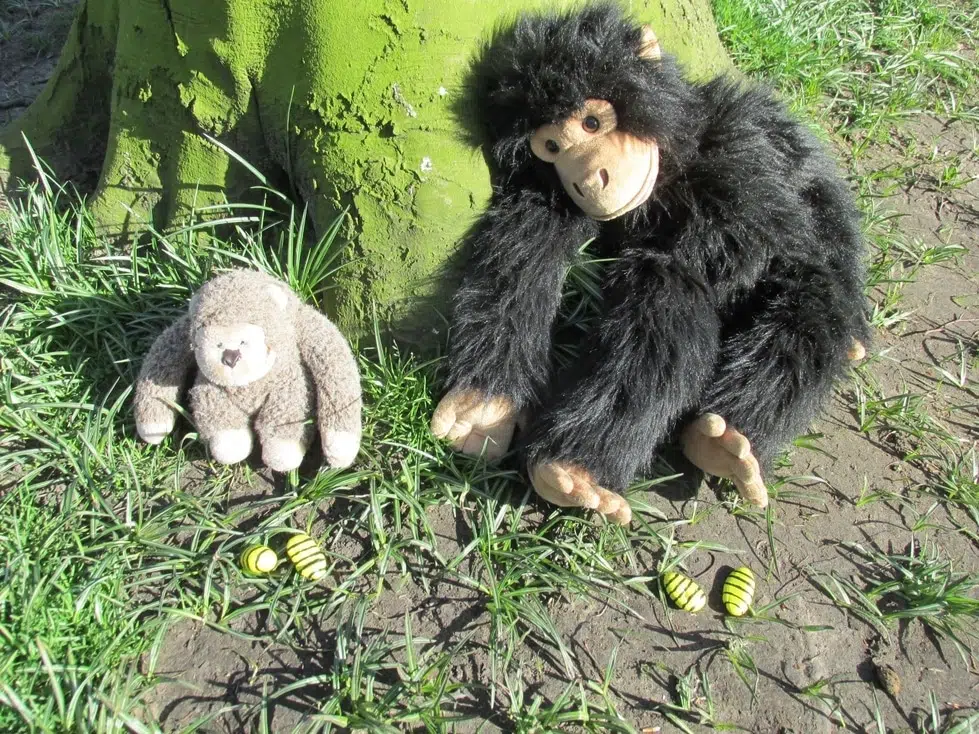
Puppet Activities For Behavior
This was how I got started using puppets, and I would really strongly recommend to anyone starting out in early education that this is one of your first action steps – get a puppet!
1. Behavior Puppets
These are quite simply some kind of ‘good’ puppet that is used specifically for reinforcing and praising positive behavior.
I used to use a rag-doll called Tatty that worked really well for this. You can check her out on Amazon here, and here she is about to do a parachute game:
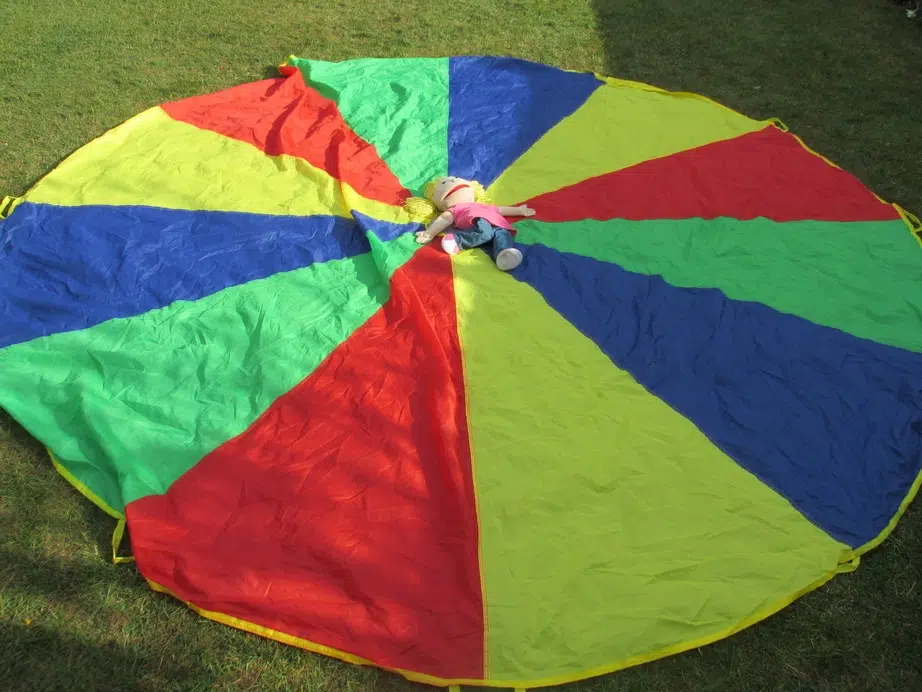
In particular, the puppet will be able to:
- Come out of a bag or box at circle time, and check everyone is sitting brilliantly
- Reward children for positive actions
- Tell stories about good things that others have done
2. Intro Song
This is very simple, but one of the ultimate ways to start any circle or group time.
Often the way you start an activity has a huge impact on what happens next. Start with them all sitting and listening, and you have a much greater chance of what happens afterwards going well.
If they are rolling about and walking around when you start, you really haven’t got much chance.
That is where a puppet and an intro song come in!
Out comes the puppet, and when everyone is watching start the song. This really gets their attention.
For a song, I would just make it up. For example, for the rag-doll puppet I had we sang, ‘Time For Tatty! Time For Tatty!’ Just make up the little tune and lyrics – it doesn’t have to sound amazing. Some sort of action is good as well to make it multisensory.
Many teachers sing sitting-down songs, or something similar, and those would be great with a puppet.
If you are looking for some excellent songs to support behavior and cooperation, then check these fantastic parachute songs out.
If you are looking to get a puppet, the number one puppet that I have ever used is this one:
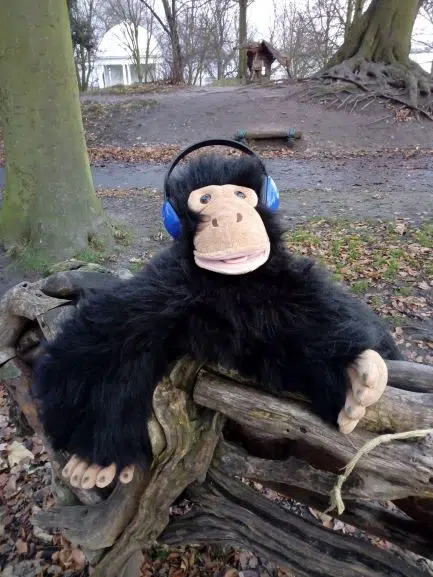
3. Talking Through Routines
Puppets are great for introducing rules and routines. It just has an extra power when a puppet tells the children about these kinds of things.
For example, the puppet can:
- Model good behavior, e.g. do a demo of how to sit!
- Talk about a rule of the day, and ‘look out’ for it through the day
- Praise children that have followed a particular rule on the day
4. Hold The Puppet To Share
Puppets are great to use in simple circle games so that you know when it is your time to speak.
For example, telling the puppet one thing they like about school or nursery. One child holds the puppet and says, ‘I like painting.’ Then they pass it to the next person, and they say something like ‘I like going outside.’
The puppet focuses their attention. They understand that it must be respected, and only speak when you are holding it.
If you want to read other preschool circle games that actually really work, then here are my favorite 21.
Literacy
There are all sorts of fantastic literacy games, and puppets can be used with very young children all the way through to at least 7 year old, and probably beyond. Here are some great literacy puppet games:
5. Oral Blending
Blending is one of the key skills of early reading. To put it simply, oral blending is merging the sounds that children hear when a word is sounded out. For example, the child hears ‘p-i-g’ and they put those sounds together to make the word ‘pig’.
Probably my favorite way to teach oral blending is by using a puppet.
Any puppet can be used for this task. What happens is that the puppet whispers a story in your ear, and one word of every sentence is in sound talk.
For example, a story time might go like this: ‘This is Pete The Parrot. Today he went on the b-u-s. What did he go on?’ Hopefully, some children will be able to hear that it is the word ‘bus’ that you have split up. ‘On the bus, he saw Harriet who is a h-e-n. What is Harriet?’ (A ‘hen’!)
Keep going like this.
The stories really help to give clues and context to the words. Honestly, this is one of the best ways of getting children blending independently.
6. Sound Effects Story
This is great for children to enjoy exploring the sounds that instruments make, as well as developing their listening skills through storytelling.
The idea of this is that the puppet makes up a story. Either you can speak in a funny voice, or, what I prefer to do, is the puppet whispers to you and you tell what the puppet has ‘whispered’!
The children listening will each have an instrument. It can be any instrument really for this.
Tell a story, but add action into the story to which the children can add sound effects.
For example, it could go something like this. ‘This is Dora the Duck. Today she was tip-toeing through the spooky wood.’ (The children make quiet tip-toe sounds). ‘Suddenly, she heard a loud roar!’ (Make loud roaring sounds). ‘She turned round and a dinosaur was stomping towards her, stomp, stomp, stomp!’ (They make stomping noises)
Keep going like this. Great for discriminating sounds. If you are looking for other early literacy activities that work on similar skills, you may well be interested in these Fantastic Alliteration Activities – Ten Terrific Ideas.
7. Dress The Puppet
This is another fun blending game.
Have one puppet, and also have some clothes that fit the puppet.
Sound one piece of clothing out, and one child will have to put that piece of clothing on the puppet. For example, say ‘Put the h-a-t on the puppet! Put on the b-o-o-t!’
8. Segmenting
Segmenting is kind of the opposite of blending. You hear a word, such as ‘pit’ and split it up into its sounds – e.g. ‘p-i-t.’
The number one way to segment is by using a robot puppet. My favorite robot toy that I have ever found is this one:
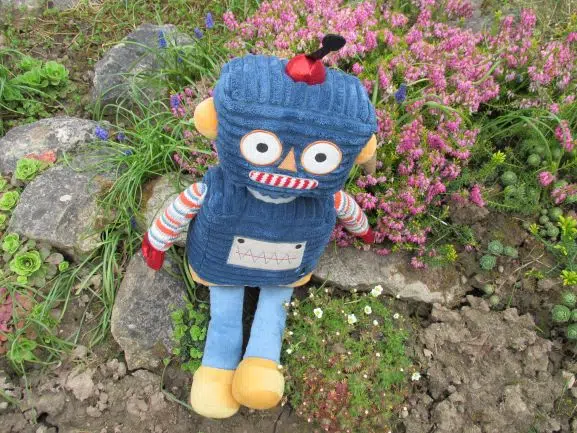
Get the children to use ‘robot arms’, i.e. bend your arms at ninety degrees at the elbows. Then the robot will give you a word, for example, ‘pig’. The children will split up the word using ‘robot talk’, e.g. p-i-g.
9. Read A Puppet A Story
This is a lovely activity that children can either do in a group or by themselves.
Children love to sit a puppet on their lap and read them a story. Just talking about the pictures or making it up is completely fine. It is a great role reversal, whereby the children become the parents and storytellers, the puppet the child.

10. Help The Puppet Read
Puppets are great when they don’t know what to do, and the children have to help them.
For this reading activity, have some simple words written up on a board, or screen. The puppet is going to try to read them but gets it all wrong! The children love helping them out.
These are some of the best literacy ideas for using puppets, but you can find out a lot more about puppets in these two articles:
Want to find out about 14 fantastic storytelling strategies using puppets?
The best phonics games you can play with puppets.
Numeracy
Once again maths is another area that can be greatly enhanced by puppets.
11. Help The Puppet Count
This is one that is great for incompetent puppets. Children find it funny, and really want to help!
Have some objects, and the puppet is going to count them. It goes something like ‘1, 2, 3, 6, 7.’ It basically gets it all wrong. The children show the puppet how to do it.
The puppet can also have issues with:
- 1:1 Counting
- Adding/subtracting
Each time the children become the teachers, which is great for their motivation and understanding.
This is just one of 17 strategies to support rote counting that I write about in this article.
12. Missing Numbers
Puppets are great for all sorts of rote counting activities. What’s rote counting? Find out here.
One simple one acts as a good introduction to missing numbers. Basically, the puppet counts, but misses one number. For example, ‘1, 2, 3, 4, 5..7, 8, 9.’ It is good to pause and be silent when the missing number is happening.
This is a super way to introduce the concept.
13. Puppet Instrument Counting
This is a great way of counting sounds. Sounds are different from counting actions, as they only happen once, are not fixed, and you can’t see them.
The idea is that the puppet has something noisy that they are going to drop into something like a bucket. Some pebbles and a metal bucket would be perfect for this.
The puppet drops a certain number of pebbles into the bucket as the children count. When it stops, they say the number. More skillful children can write the number or show it on number fans.
Storytelling
14. Puppet Goes on Trip
This is an excellent ‘hook’ for lots of literacy activities and can be used with children from a young age to probably at least 8.
The puppet basically goes on an adventure. This may be planned or unplanned. For example, they might go to:
- A world you have experienced in a story
- On holiday!
- To a famous landmark or country
- Around the local area
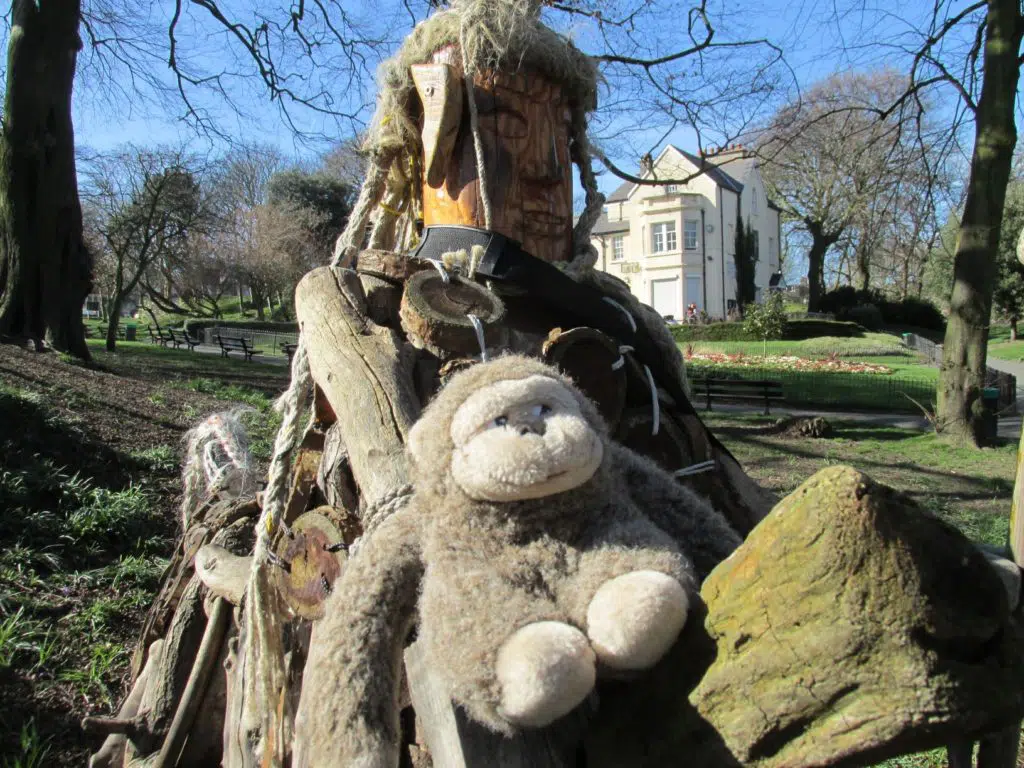
It is good if they send back some photos of their trip! You could photograph them in different places, or superimpose them onto landmarks if you know how to do that.
The children can write them postcards. They could write about their trip. It is a great way of stimulating talk and writing.
15. Puppet Is Trapped!
This is a similar idea to the last but with a darker twist!
The puppet has been kidnapped, or got stuck somewhere, or been taken away by baddies. The puppet can communicate by:
- Sending a photo of where it is stuck
- Send a postcard
- A ransom letter is found
- The puppet has disappeared, but there are ‘clues’, e.g. footprints or something similar
Children can do all sorts of activities in response to this – create wanted posters; create maps; imagine where he is and what has happened.
16. Puppet Theatre
This is the old classic activity, but it really works well if you do a bit of adult modeling to get it going.
Having some kind of curtain or mini-theatre, or even just a few puppets in a designated area can work.
It is good to lay some ground rules like the puppets don’t fight! The more you can show them how to do it, the better the quality of the interactions will be.
17. Puppet Tells Story
This is another classic activity, but one that develops multiple skills.
It is a great spark, or ‘hook’ for literacy activities.
It is great if you find the puppet somewhere in the setting. For example, you find a clue that leads you to the cupboard, and there is the puppet!
The puppet can then tell the horrifying tale of why it got stuck in the cupboard. For example, an evil witch cast a spell on it, and it vanished into the cupboard.
After the puppet has told its tale, it can set lots of challenges for the children. For example, can they make magic wands that will only make good spells?
Puppets are just one of many storytelling resources you can use. Another one that they find really exciting is story stones, and you can find out all you ever need to know about them here.
Physical Games
18. Bounce The Puppet Parachute Game
The idea of this is to have the children standing around the parachute holding it. Put a puppet on the parachute in the middle.
Then everyone gently bounces the puppet up and down as you sing (to the music of What Shall We Do With The Drunken Sailor):
‘What shall we do with the little puppet,
hat shall we do with the little puppet,
hat shall we do with the little puppet,
Early in the morning.’
Other verses are:
‘Bounce and bounce and bounce the puppet..’ (Bounce it up and down)
‘Wiggle, wiggle, wiggle, wiggle the puppet…’ (wiggle it from side to side)
‘Up and down and up and down…’ (Go up and down)
This game is great for keeping a constant beat and moving to the rhythm of spoken words.
If you want to find out more parachute games to have a go of, I have created the ultimate resource! The 30 greatest parachute games for kids cover pretty much every area of the curriculum, so go and check it out.
19. Puppet Obstacle Courses
The simple idea of this is that the puppet is in danger! The children make some kind of obstacle course, or walkway using big construction materials, like crates and planks, to try to save it.
They are going to try to take the puppet ‘to safety’!
They carry the puppet through the obstacles.
PSED
20. Draw Pictures/Write Messages To Puppet
Puppets are great for both sending and receiving messages, pictures, cards, and all sorts of things like that.
Children really enjoy giving them presents of different things – it is a good motivator.
Some things that children can send them include:
- Birthday cards
- Christmas cards
- Letters
- Pictures
- Secret maps
- Secret code!
21. Take Home At Weekend
What could be more motivating than knowing that you could possibly take the class puppet home at the end of the week!?
This is a beautiful experience. You can really jazz this up by preparing some kind of bag or suitcase to put the puppet in, and maybe a few things to take with it, like a diary, some pretend food, and a set of instructions on what to do with the puppet.
Children can take the puppet out with them at the weekend, and hopefully take photos or write what they did. A great way to motivate positive behavior, and a special reward for children who have made progress in some way that week.
22. Inspiration For Further Activities
Puppets are great at giving challenges.
For example, it might want to go to the moon. Can the children make a spaceship?
It might want to have a party. Can they write invitations?
It makes a massive difference that it is the puppet asking for these things, and not an adult.
Conclusion
For a small investment, a puppet can be used in multiple ways. Children never tire of seeing them. I cannot recommend strongly enough the value and the power of using puppets in your teaching!
If you liked this article, why not check out one of these:
What are story spoons and how do you use them? Find out the ten best ideas
